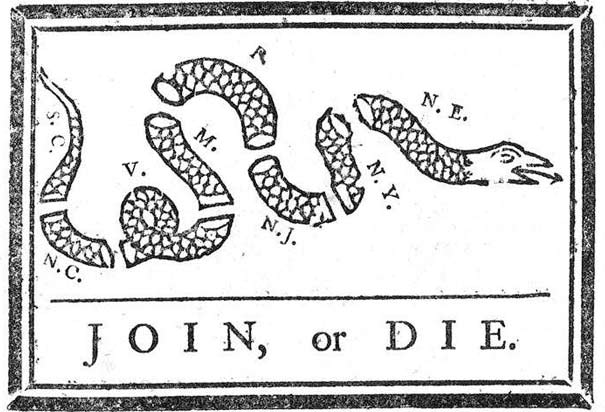Essential Question:
-What does colonization mean?
-What can we infer about the values and beliefs of settlers?
-What makes a settlement succeed?
-What can we infer about the values and beliefs of settlers?
-What makes a settlement succeed?
Themes: Settlements on the East Coast and Southwest, Colonial life and struggles, Mercantilism, Colony-building, economic relationships
1. A quick review of New England Colonization and Puritans Slideshow - please download and save in your electronic notebook.
2. Quick review of Jamestown Slideshow should be downloaded to your electronic notebook and then viewed/used to take notes on.
-An blank outline for understanding the basic concepts behind An English Settlement at Jamestown.
-The First Thanksgiving at Jamestown - What did we learn from Jamestown?
3. The Middle Colonies 3-2-1 Analysis on the most important aspects of these colonies.
- The Middle Colonies
- What were they?
-What made them important?
4. North America Map - circa 1713 VS. Map of the New World - circa 1730
5. Group 1: Colonial Clothing in the 18th Century - Go off and explore using this website and all sections pertaining to clothing.
A. How many layers did men wear? And women?
B. Where did the material for clothing come from? Who made it?
C. Why was clothing and dressing up an important part of the 18th century?
6. Group 2: Colonial Food: A struggle for survival - In small groups, make a grocery list for one month.
a. How will you survive for one month?
b. Come up with a strategy for food - hunting, preservation, etc?
c. What difficulties will you face?
7. America and it’s Colonies - What questions gave you problems? Let's discuss the content in this article and the primary source cartoons.
8. Native Americans and the Invasion of the Coastline: From 500 Nations (58:20 mark to the end!)
Homework:
1. Please analyze the Join or Die Cartoon below and answer the two questions that follow.

This cartoon, published by Benjamin Franklin on May 9, 1754 in the Pennsylvania Gazette. (Photo Credit: Library of Congress)
Questions:
A. What is the key message in this statement?
B. What do the 8 segments represent on the snake and why are there only eight segments on the snake?
___________________________________________________
U.S. HISTORY II - Period 1:
Essential Questions:
-Was American expansion overseas justified?
-Did the press cause the Spanish-American War?
-Was the acquisition of the Panama Canal Zone and act of justifiable imperialism?
-Does the need for self-defense give the US the right to interfere in the affairs of Latin America? (Think about the Roosevelt Corollary, "Dollar Diplomacy," and "Watchful Waiting")
Themes: Historical thinking methods, evaluating sources, Thinking like an historian, PEGS (Political, Economic, Geographic, Social), The Beginning of the Progressive Era
1. Student Outlines - President Roosevelt , President Taft , and President Woodrow Wilson.
+"The Progressive Presidents: Teddy Roosevelt", "William Taft", and "Woodrow Wilson" below in separate segments from the History Channel and complete the Video Questions from The History Channel - The Presidents: The Lives and Legacies of the 43 Leaders of the US
2. Teddy Roosevelt Resources:
Teddy Roosevelt: The Trust-buster slideshow
Theodore Roosevelt - A PBS special on TR's Foreign Policy Adventures
Teddy Roosevelt Association - Lots of pictures and stories of keeping his legacy alive.
Progressive President's Foreign Policy - U.S. State Department
Teddy Roosevelt's Broad Powers - A pretty darn good essay
Whitehouse.org - Theodore Roosevelt Number 26
Theodore Roosevelt: Progressive Crusader - The Heritage Foundation of American Leadership
President Theodore Roosevelt Video - Similar to the ones we watch in class!! A must see!
3. William Howard Taft - The White House website
William Taft - VERY NICE biography and legacy page from the University of Virginia
Presidential Video on William Howard Taft - Just like the ones we watch in class!! A must see!
4. President Woodrow Wilson Video - YouTube clip from a teacher on Taft AND Wilson.
Woodrow Wilson - The White House org
Woodrow Wilson Biography - from the University of Virginia
Homework:
1. Get ready to take a test on Friday on Chapter 17 and The Progressive Era.
2. Review the rest of Chapter 17 quickly to get a sense of what Progressivism looked like under Presidents Taft and Woodrow Wilson and just complete a two-column notes on the outlines I shared with you on President Roosevelt , President Taft , President Woodrow Wilson and remember no copying, but continue to work on paraphrasing. This will conclude our study of The Progressives Era.
_____________________________________________________
International Studies - Period 7
Essential Questions:
1. What does international studies mean?
2. What is Peace Day?
3. What are the most important things individuals can or should do on behalf of a peaceful world?
Themes: Humanitarianism, World Peace, War vs. Peace, Sustainable Change, Non-Government Organizations
2. Here are the General Assembly's Opening Goals - Meetings will be happening later this week and into next week for General Debate.
3. Ban-Ki-Moon - Secretary-General of the United Nations
3. Brief History of the United Nations:
4. Human Rights - What are Human Rights?
5. United Nation Resources:
United Nations History
United Nations Multimedia Room
United Nations School bus Virtual Field Trip
United Nations Research Guide A-Z on EVERYTHING you can imagine!
United Nations Peacekeeping Missions
University of California organized a UN resources guide - Honestly, the BEST and more ORGANIZED I have seen yet on how to research issues concerning the United Nations.
Homework:
1. Please go and explore the United Nations Website and I would highly recommend the UN GA PRESS PAGE and UN NEWS PAGE to give you up-to-the-day events and meetings that are happening at the United Nations. I am looking for you to complete a 3-2-1 Analysis on the United Nations Right now - meaning 3 important facts we must know, two key factors in the UN right now, and 1 "So What Factor" about the upcoming goals for the 70th annual United Nations.
No comments:
Post a Comment